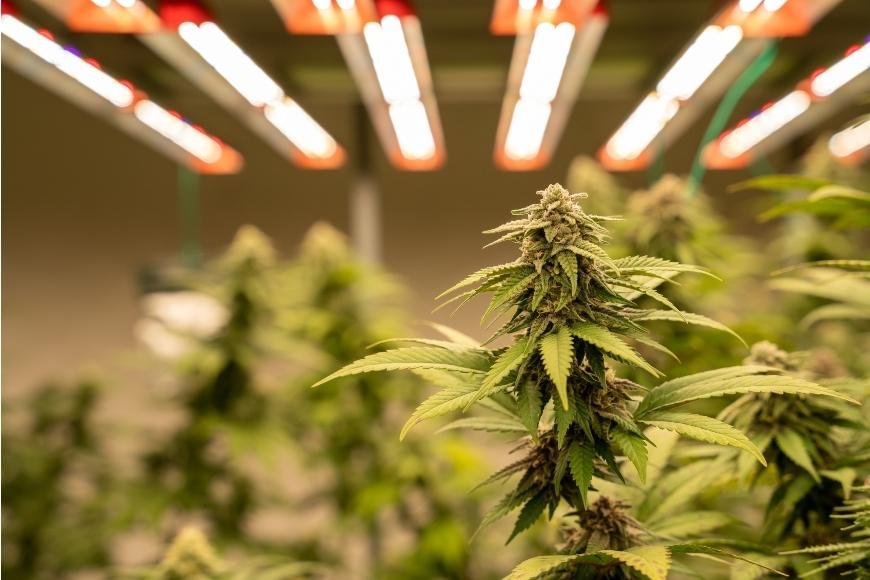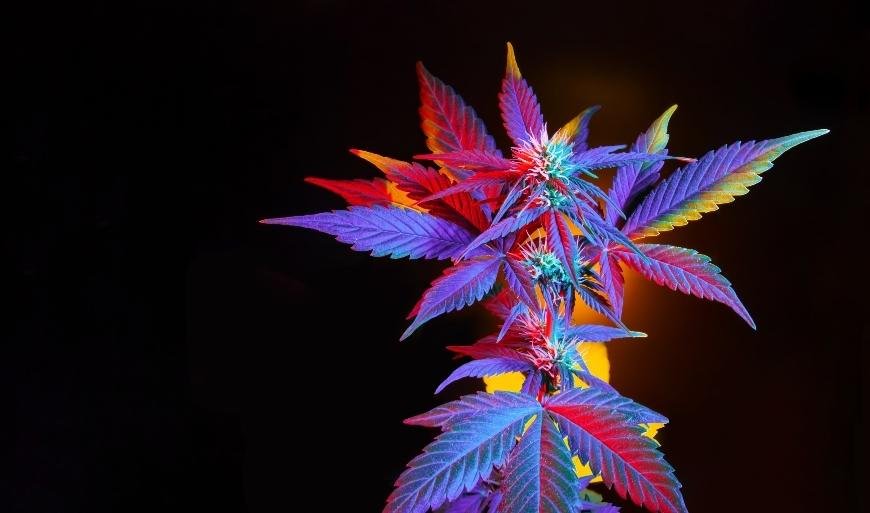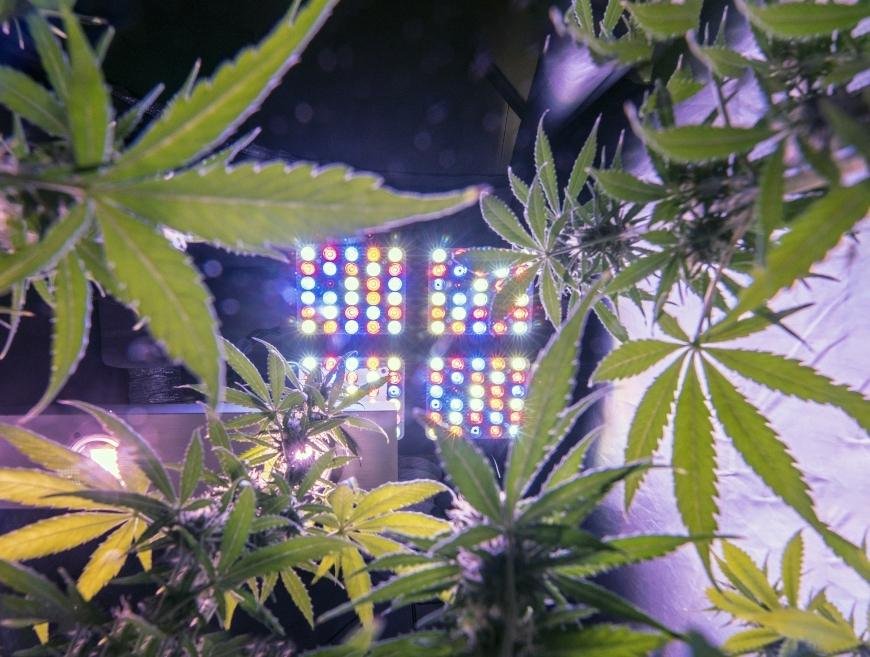The Best Light Schedule for Autoflowering Cannabis
Discover the best light schedule for autoflowering cannabis plants to optimize growth, yield, and potency in our comprehensive guide on indoor cultivation.

Discovering the best light schedule for autoflowering cannabis plants is crucial to achieving optimal growth and yields. In this comprehensive guide, we will delve into various aspects of lighting for growing autoflowering cannabis indoors, including understanding the unique characteristics of these plants and how they differ from photoperiod strains.
We'll discuss the importance of selecting appropriate light schedules for your autoflowering cannabis plants and why it's essential to avoid 24-hour light periods. Furthermore, you'll learn about gradually reducing light hours during their life cycle and choosing high-quality grow lights that cater to both vegetative and flowering stages.
In addition, we'll cover monitoring light intensity levels throughout your plant's growth cycle as well as maximizing yields through proper lighting techniques. By implementing these strategies, you can ensure a successful harvest with thriving autoflowering cannabis plants by following the best light schedule tailored specifically for them.
Table of Contents:
- Understanding Autoflowering Cannabis Plants
- What Makes Autoflowers Different?
- Light Schedules for Autoflowering Cannabis Plants
- Avoid 24-Hour Light Periods
- Gradual Reduction in Light Hours
- Select High-Quality Grow Lights
- Monitor Light Intensity
- Maximize Yields with Proper Lighting
- Frequently Asked Questions The Best Light Schedule for Autoflowering Cannabis Plants
- Conclusion
Understanding Autoflowering Cannabis Plants
Autoflowering cannabis plants are a unique and popular choice among recreational growers, thanks to their ability to flower automatically without relying on photoperiods. Unlike photoperiod plants, which require specific light cycles to trigger flowering, autoflowers begin the process based on their age and growth stage. This makes them an excellent option for those looking for a more straightforward growing experience with less maintenance.
What Makes Autoflowers Different?
- Ruderalis genetics: The key difference between autoflowering cannabis plants and traditional photoperiod strains lies in their genetic makeup. Autoflowers have been bred with Ruderalis genetics, which allows them to flower independently of light schedules.
- Faster growth cycle: Thanks to these genetics, autoflowering cannabis plants typically have a shorter overall growth cycle compared to photoperiod strains, often reaching full maturity within just 10-12 weeks from seed germination.
- No need for separate vegetative and flowering spaces: Since they don't rely on changes in light exposure or duration, you won't need separate areas dedicated solely to the vegetative or flowering stages when growing autoflowers - making them ideal for small-scale home grows or limited space setups.
Understanding autoflowering cannabis plants is an important step for any grower to ensure their crop produces the best yield. With this knowledge, one can now move on to creating a light schedule that will maximize growth and yields from these special types of plants.
Light Schedules for Autoflowering Cannabis Plants
Unlike photoperiod plants that rely on changes in daylight hours to trigger flowering, autoflowers begin to flower automatically based on their age and growth stage. Therefore, it's essential to manage your light schedules carefully during different stages of development.
The 18/6 Light Schedule
A popular choice among growers is the 18/6 light schedule, which means providing 18 hours of continuous light followed by a 6-hour dark period every day. This schedule offers a good balance between energy consumption and optimal plant growth. By giving your plants enough time in darkness, you allow them to rest and recover from any stress they might experience during the vegetative phase.
The 20/4 Light Schedule
An alternative option is the 20/4 light schedule, where you provide your plants with 20 hours of continuous light followed by a brief 4-hour dark period each day. Some growers believe that this extended exposure to artificial sunlight allows autoflowers more time for photosynthesis, resulting in faster growth rates and potentially higher yields.
No single light schedule is ideal for all autoflowering cannabis plants; each strain may necessitate distinct approaches, and cultivators may choose different techniques based on their individual experience or tastes. Different strains may have unique requirements, and individual growers might prefer specific methods based on their experience or personal preferences. However, both the 18/6 and 20/4 light schedules are widely used by many successful cultivators, making them a great starting point for anyone looking to optimize their grow.
The light schedule for autoflowering cannabis plants is an important factor in ensuring a successful harvest. Therefore, it's essential to avoid 24-hour light periods as this can lead to stunted growth and low yields.

Avoid 24-Hour Light Periods
While it may be tempting to think that providing your autoflowering cannabis plants with constant light will result in faster growth and bigger yields, this is not the case. In fact, a 24-hour light period can cause unnecessary stress to your plants and hinder their overall development. It's essential for growers to understand the importance of giving their autoflowering cannabis plants some darkness during each day.
The Importance of Darkness for Plant Health
Just like humans, plants need periods of rest as well. During dark periods, crucial processes such as respiration occur more efficiently than when exposed to continuous light. This allows the plant cells to repair themselves and helps maintain optimal health throughout its life cycle.
Suggested Light Schedules: 18/6 or 20/4?
- 18 hours on / 6 hours off: One popular option among growers is an 18/6 schedule - meaning that you provide your autoflowering cannabis plants with 18 hours of continuous light followed by a six-hour period of darkness every day. This schedule offers a good balance between promoting growth while still allowing time for restorative processes during dark periods.
- 20 hours on / 4 hours off: Another common choice is a slightly longer daily lighting duration - offering your plants with 20 hours of illumination per day along with four consecutive hours in complete darkness. It is imperative to be mindful of any indications of pressure or over-exposure as this timetable can prompt quicker development and somewhat higher yields.
Ultimately, the best light schedule for your autoflowering cannabis plants will depend on factors such as strain characteristics, grow room conditions, and personal preferences. However, it is crucial to avoid a 24-hour light period in order to maintain plant health and maximize yield potential.
Gradual Reduction in Light Hours
While autoflowering cannabis plants do not rely on photoperiods to trigger flowering, some growers opt for a gradual reduction in light hours over time. This approach can help simulate the decreasing daylight hours of fall and potentially maximize yields.
The Benefits of Gradually Reducing Light Hours
- Mimics natural conditions: By gradually reducing light hours, you create an environment that more closely resembles outdoor growing conditions. Autoflowering cannabis plants have evolved to thrive under these circumstances, so replicating them indoors can lead to better results.
- Promotes healthier growth: A steady decrease in light exposure may encourage healthy growth and development throughout the plant's life cycle. This includes stronger stems, denser foliage, and larger flowers.
- Increase resin production: As the days get shorter outdoors, cannabis plants naturally produce more resin as a defense mechanism against colder temperatures and potential threats. Simulating this process by reducing light hours could lead to increased resin production and higher potency buds.
Tips for Implementing Gradual Light Hour Reduction
- Determine your starting schedule: Begin with an initial lighting schedule such as 18/6 or 20/4 during the vegetative stage of your autoflowering cannabis plants' growth cycle.
- Create a gradual transition plan: Decide how much you want to reduce the daily light exposure over time. For example, you might choose to decrease it by one hour every week until reaching a final schedule like 12/12 (twelve hours of darkness).- Monitor plant health: Observe your plants attentively as you make alterations to the light cycle, ensuring they stay in good condition and do not exhibit any signs of strain. If necessary, make adjustments to the reduction plan based on their response.
- Adjust according to strain: Different autoflowering cannabis strains may have varying responses to changes in light exposure. Research your specific strain's preferences and adapt your lighting schedule accordingly for optimal results.
- Keep track of progress: Document any changes in plant growth or bud development throughout the process so that you can refine your approach for future grows.
Gradually reducing the light hours of your autoflowering cannabis plants is an important step in ensuring their healthy growth and development. Selecting top-notch illumination sources can guarantee that your plants are getting the correct measure of light to prosper.
Select High-Quality Grow Lights
Investing in high-quality grow lights will not only improve your plant's overall health but also contribute to better bud production. Here are some factors you should consider when selecting the best grow lights for your autoflowering cannabis plants:
- Type of Light: There are several types of grow lights available on the market, including LED, HID (High-Intensity Discharge), and CFL (Compact Fluorescent Light). Each type has its pros and cons; however, many growers prefer LED grow lights for their energy efficiency, longevity, and ability to provide a full spectrum of light.
- Spectrum: Autoflowering cannabis plants require different light spectrums during various stages of growth. For instance, they need more blue light during the vegetative stage and more red light during flowering. Therefore, choose a grow light that offers an adjustable or full-spectrum feature so that you can cater to your plant's specific needs at each stage.
- Intensity: The intensity of your grow light is measured in PPFD (Photosynthetic Photon Flux Density) or PAR (Photosynthetically Active Radiation). A higher intensity ensures better penetration into the canopy resulting in healthier buds. However, too much intensity can cause damage to leaves or stunt growth altogether. It is essential to strike a balance between providing enough intensity without harming your plants by monitoring their response closely.
- Coverage: Make sure your grow light provides even coverage to all plants in your growing area. Uneven distribution of light can lead to uneven growth and yield, so it's crucial to select a grow light with adequate coverage for the size of your grow space.
In addition to these factors, it is also essential to consider the initial cost and long-term energy consumption when selecting the best grow lights for autoflowering cannabis plants. Remember that investing in high-quality equipment will pay off in terms of better yields and healthier plants.
Monitor Light Intensity
Growing autoflowering cannabis plants requires not only the right light schedule but also monitoring the intensity of your grow lights. Proper light intensity is crucial for healthy growth and development, as well as maximizing yields. In this section, we'll discuss how to measure and adjust light intensity to ensure your autoflowering plants thrive.
Measuring Light Intensity
To accurately measure the light intensity in your grow space, you can use a tool called a light meter. This device measures the amount of photosynthetically active radiation (PAR) reaching your plants' leaves. PAR refers to wavelengths between 400-700 nanometers that are essential for photosynthesis.
- Lux meters: These devices measure illuminance or visible light in units called lux. Although they're more affordable than PAR meters, they don't provide accurate readings for plant growth since they focus on human-visible wavelengths rather than those used by plants.
- PAR meters: These specialized tools offer precise measurements of usable light energy within the PAR range. They tend to be more expensive but are ideal if you want accurate data on how much beneficial light reaches your cannabis plants.
Maintaining Optimal Light Intensity Levels
Different stages of an autoflowering cannabis plant's life require varying levels of light intensity:
- Seedlings and young vegetative stage: Ideal PAR values range from 200-300 µmol/m²/s during this phase when seedlings need gentle lighting conditions.
- Mature vegetative stage: As your plants grow, they can handle more intense light. Aim for PAR values between 400-600 µmol/m²/s during this stage.
- Flowering stage: To maximize bud development and yield, increase the intensity to a range of 600-900 µmol/m²/s throughout the flowering phase.
If the illumination is not suitable, alter the space between your lighting fixtures and vegetation as needed. Keep in mind that different types of grow lights have varying optimal distances from plant canopy:
- High-pressure sodium (HPS) lights: Maintain a distance of about 12-24 inches (30-60 cm).
- LED grow lights: Position them approximately 18-36 inches (45-90 cm) away from the top of your plants.
Remember to monitor temperature levels as well since higher-intensity lighting can generate more heat. Use fans or air conditioning systems if necessary to maintain an ideal temperature range between 68°F -77°F (20°C -25°C).

Maximize Yields with Proper Lighting
By following the best light schedules and practices, you can ensure that your plants receive the optimal amount of light to support their growth and development. Here are some key factors to consider when setting up your grow room:
1. Consistency in Light Schedule
Maintaining a consistent light schedule throughout the entire growth cycle of your autoflowering cannabis plants is essential for achieving maximum yield potential. This means sticking to either an 18/6 or 20/4 schedule, depending on what works best for your specific strain and growing conditions.
2. Optimal Light Intensity
The intensity of the light plays a significant role in determining how well your autoflowering cannabis plants will perform during each stage of their life cycle. Make sure you're using high-quality grow lights that provide sufficient intensity without causing damage due to excessive heat or brightness.
3. Appropriate Spectrum of Light
Different stages of plant growth require different spectrums of light, so it's important to choose grow lights with an appropriate spectrum range. For example, blue spectrum light promotes vegetative growth while red spectrum encourages flowering.
Tips for Maximizing Autoflower Cannabis Yields:
- Avoid overwatering: Autoflowering cannabis plants are sensitive to overwatering, which can stunt their growth and reduce yields. Ensure you are providing the correct amount of H2O in correlation to your plant's size and development stage.
- Proper nutrients: Autoflowers require a specific balance of nutrients for optimal growth. Be sure to use nutrient solutions designed specifically for autoflowering strains.
- Training techniques: Implement training techniques like low-stress training (LST) or topping to help increase yield potential by promoting more bud sites and an even canopy.
- Adequate air circulation: Proper airflow is essential for preventing mold, pests, and other issues that can negatively impact your harvest. Ensure there's adequate ventilation in your grow space with oscillating fans or exhaust systems.
Incorporating these best practices into your growing routine will help ensure that you provide the ideal lighting conditions necessary for maximizing yields from autoflowering cannabis plants. Keep an eye on your autoflowering cannabis plants as they progress, since each strain may need different conditions for optimal yields.
Frequently Asked Questions The Best Light Schedule for Autoflowering Cannabis Plants
What is the optimal light schedule for Autoflowers?
The optimal light schedule for autoflowering cannabis plants is typically 18 hours of light and 6 hours of darkness (18/6) throughout their entire life cycle. This provides a balance between sufficient light exposure for growth and energy conservation during dark periods, resulting in healthy plants with high yields.
What is the best light schedule for growing cannabis?
The best light schedule varies depending on the type of cannabis plant being grown. For photoperiod strains, an 18/6 or 16/8 vegetative phase followed by a 12/12 flowering phase works well. However, as mentioned earlier, autoflowering strains thrive under an 18/6 light/dark cycle throughout their entire growth.
Do Autoflowers need less intense light?
No, autoflowers do not necessarily require less intense lighting compared to other types of cannabis plants. They can still benefit from strong lights such as LED grow lights. However, due to their smaller size and shorter lifespan, it's crucial to ensure proper distance between the plants and lights to avoid overexposure or burning.
Conclusion
Autoflowering cannabis plants have unique light requirements that differ from photoperiod strains. The best light schedule for autoflowering cannabis plants involves avoiding 24-hour light periods, gradually reducing the number of hours of light exposure, selecting high-quality grow lights, and monitoring the intensity of the light.
By following these guidelines, growers can maximize yields and produce high-quality buds with potent effects. It is essential to understand the specific needs of autoflowering cannabis plants to ensure they receive optimal lighting conditions throughout their life cycle.





















































































































